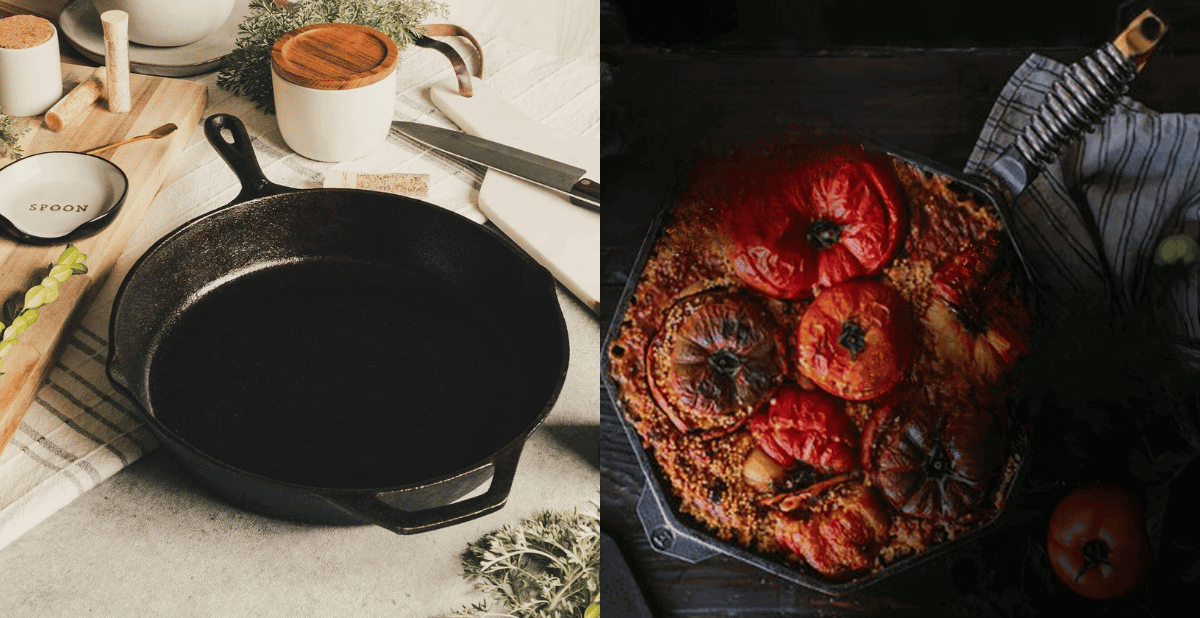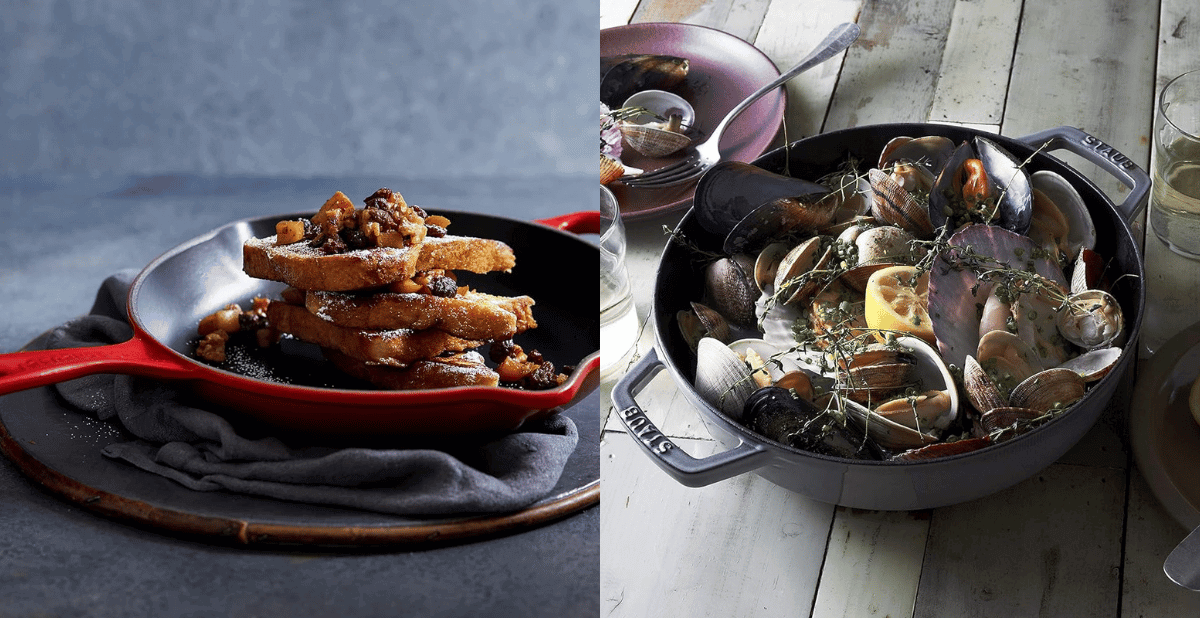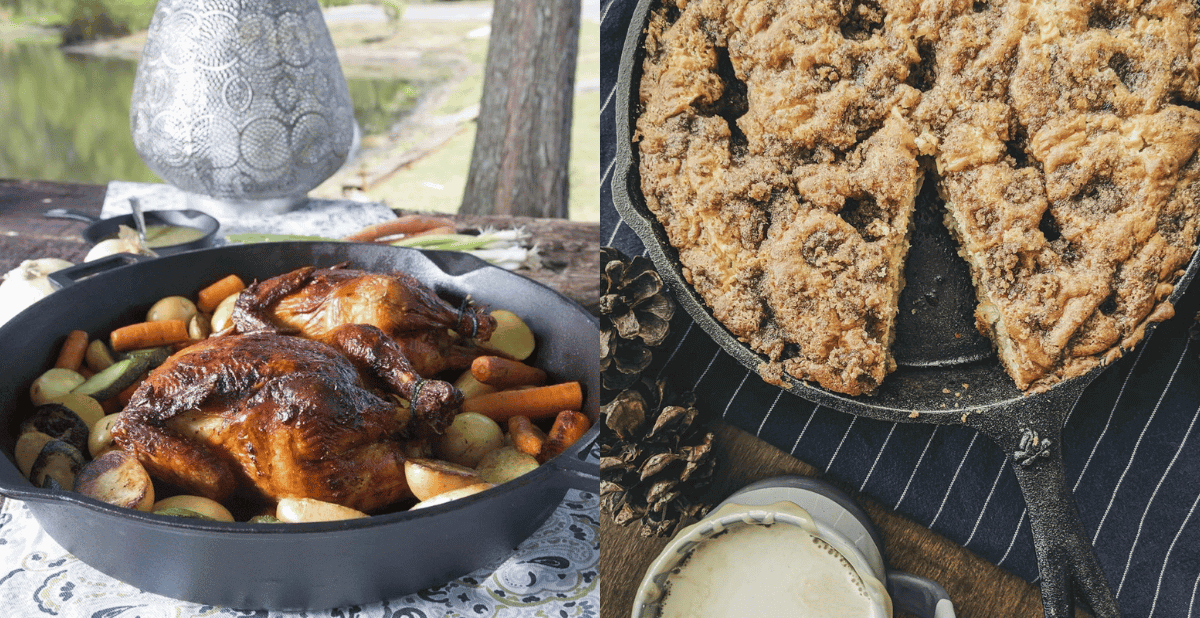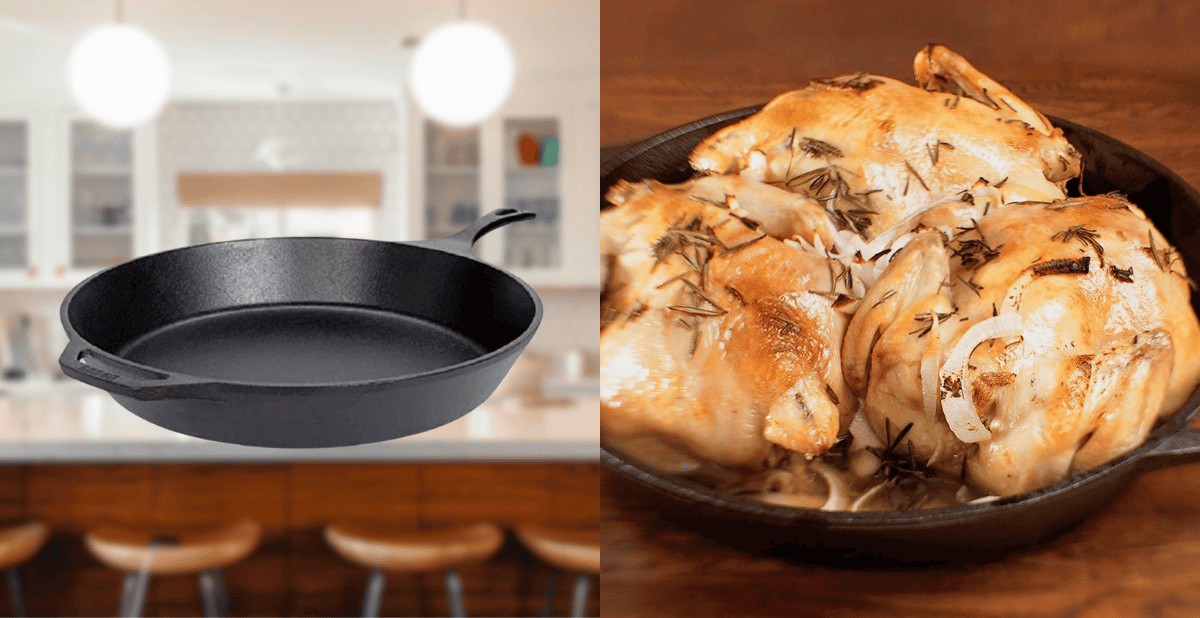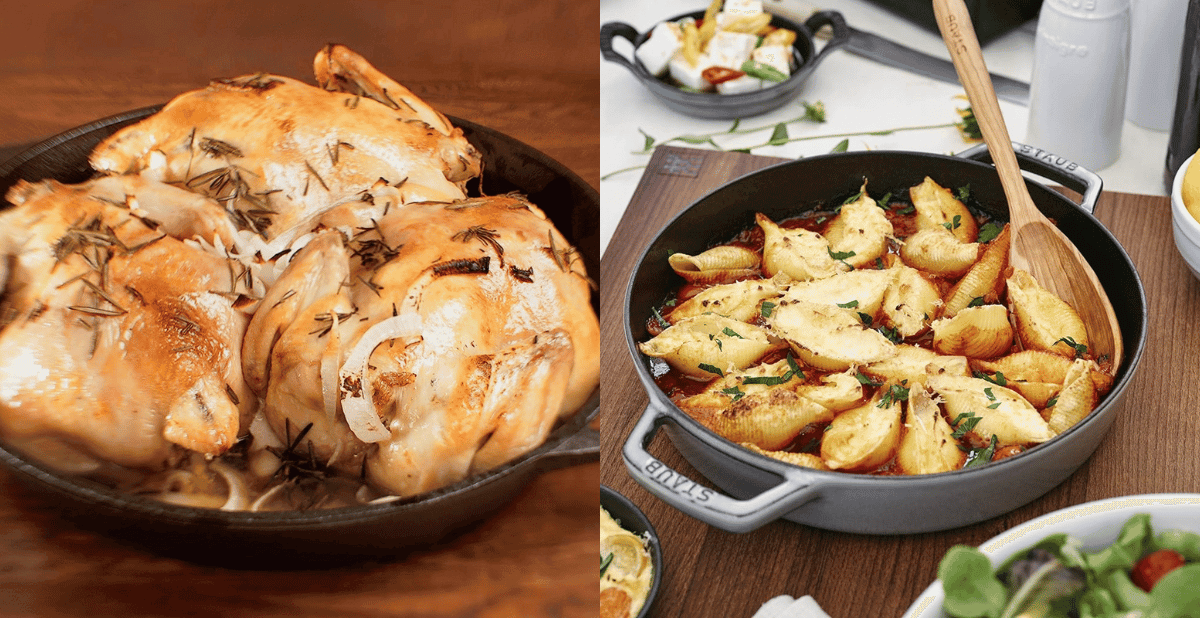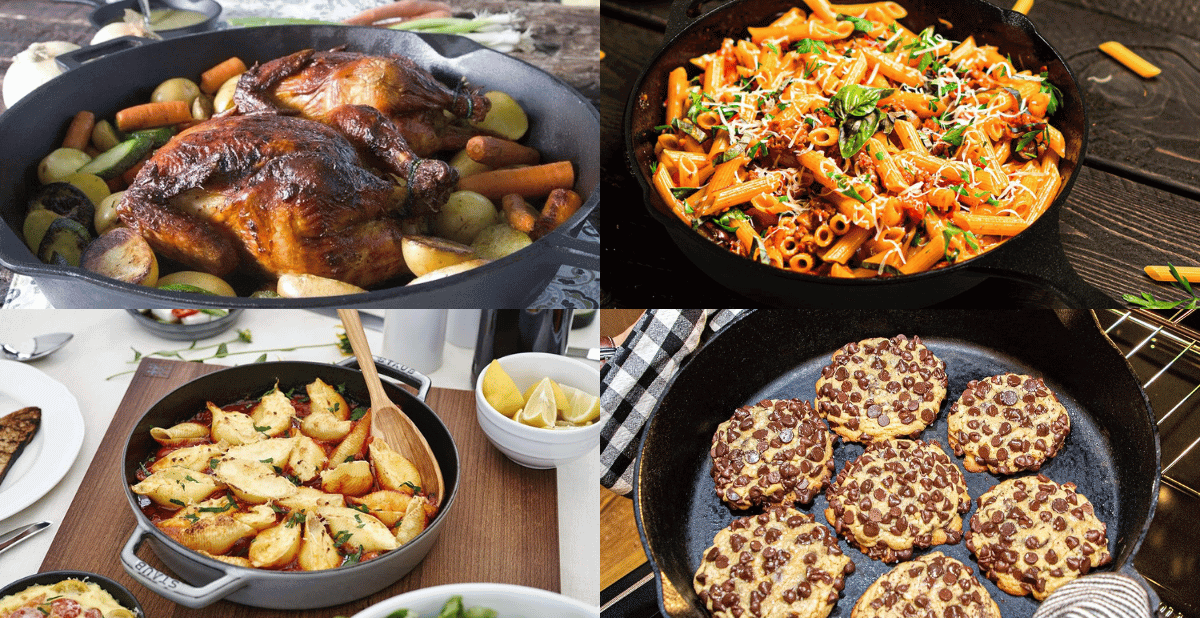Cast iron cookware has been a staple in kitchens for centuries, revered for its durability and heat retention. However, what is better than a cast iron skillet?
Key Takeaways:
- Discover alternatives to traditional cast iron skillets that offer unique benefits.
- Learn about the advantages of carbon steel, enameled cast iron, and stainless steel pans.
- Understand the importance of choosing the right cookware for specific cooking tasks.
The culinary world is vast, and other materials offer different advantages.
Let's explore alternatives that suit your cooking style and needs.
Carbon Steel Pans: The Lightweight Contender
Carbon steel cookware is often compared to traditional cast iron skillets.
Made from iron and carbon, these pans are similar in many ways but have a few key differences.
Carbon steel skillets are typically lighter, making them easier to handle, especially when flipping or tossing food.
They also heat up faster and are just as capable of searing steaks or pan-frying pork chops to perfection.
Enameled Cast Iron Pans: The Rust-Free Solution
Enameled cast iron pans are essentially regular cast iron with an enamel coating.
Unlike cast iron, this smooth surface prevents rust and requires no seasoning.
These pans retain heat well and are ideal for cooking tasks like simmering tomato sauce or searing meats.
They also offer a nonstick surface that's easier to clean.
Stainless Steel Pans: The Versatile Performer
Stainless steel pans are a mainstay in many professional kitchens.
They are durable, have a smoother surface, and, unlike cast iron, are a poor conductor of heat.
However, stainless steel excels in heat distribution when bonded with other metals like aluminum or copper.
Stainless steel is great for cooking eggs and sautéing vegetables and can go from the stovetop to the oven without a hitch.
The Heat Factor: Retention vs. Responsiveness
One of the most lauded features of most cast iron skillets is their ability to retain heat.
This makes them excellent for high-heat cooking tasks such as searing meats.
However, for those who prefer a cooking surface that responds quickly to changes in temperature, carbon steel or even certain stainless steel pans might be the better option.
The Weight Debate: Heavy Duty or Light and Easy?
The weight of a traditional cast iron skillet can be a drawback for some.
Carbon steel skillets are worth considering if you're looking for lighter-weight options that still provide many benefits of cast iron.
They offer a balance between the heft of cast iron and the ease of handling, perfect for those who find most cast iron pans too cumbersome.
Durability and Resilience: Cast Iron's Time-Tested Legacy
When it comes to durability, the cast iron pan is often the heirloom of the kitchen, passed down through generations.
Its resilience is unmatched by other cookware, primarily due to the robust material and the manufacturing process involving sand molds, which create a nearly indestructible product.
Unlike other pans that might warp or deteriorate over time, a well-maintained cast iron skillet can withstand decades of high-heat cooking and even mishaps that would spell the end for less sturdy vessels.
Moreover, the cast iron pan's ability to retain heat is a cooking benefit and a testament to its enduring nature.
This characteristic means that even after the heat source has been turned off, the pan continues to cook, allowing for energy-efficient meal preparation.
The pan's thick walls contribute to this heat retention, ensuring that your investment is not only in a cooking utensil but also in a piece of culinary history that will hold its value and functionality over time.
Carbon Steel Pan: The Rising Star in Modern Kitchens
Carbon steel pans quickly became a favorite among home cooks and professional chefs.
Unlike traditional cast iron, carbon steel is lighter and easier to handle, making it a go-to for those juggling multiple dishes simultaneously.
Its composition allows it to retain heat superbly, ensuring food is cooked evenly and efficiently.
This characteristic is particularly beneficial when searing meats, as it guarantees a perfect crust every time.
The carbon steel pan's ability to maintain high temperatures makes it ideal for stir-fries and other quick-cooking methods, where heat control is essential.
Moreover, carbon steel pans are often sold pre-seasoned, a significant advantage for those eager to cook without the initial hassle of seasoning.
Pre-seasoned pans have a layer of protection against rust and a non-stick surface that improves with use.
This feature saves time and allows for an easier initial cooking experience.
The seasoning becomes more robust as the pan is used, creating a natural, nonstick surface that rivals coated nonstick pans.
Carbon steel pans' pre-seasoned aspect is a testament to their convenience and user-friendliness, appealing to both novice cooks and seasoned kitchen veterans.
The Heat Mastery of Carbon Steel
When cooking, a pan's ability to retain heat is crucial for achieving desired culinary results.
Carbon steel pans excel in this area, as their material composition allows them to effectively retain heat, rivaling even the most well-known cast iron skillets.
This retention minimizes temperature fluctuations, providing a consistent cooking environment for recipes requiring precise heat management.
Whether searing a steak to perfection or gently cooking a delicate fish fillet, a carbon steel pan's heat retention can make all the difference.
The benefits of a pan that retains heat go beyond just cooking performance.
Energy efficiency is another advantage, as less heat is required to maintain the desired cooking temperature.
Once the carbon steel pan reaches the optimal heat level, you can reduce its energy output while still relying on it to do its job effectively.
This helps reduce utility bills and contributes to a more environmentally friendly cooking process.
The combination of performance and efficiency makes the carbon steel pan a smart choice for optimizing kitchen practices.
The Seasoning Journey: Building Flavor Layer by Layer
Seasoning a cast iron pan is a rite of passage for many home cooks, and it's a journey that builds flavor and character with every use.
The process begins with a thin layer of neutral oil, heated until it polymerizes and bonds to the surface, creating a natural, nonstick coating.
This layer is not static; it evolves and improves with each meal, making the cast iron pan a dynamic tool that reflects the cooking history of its owner.
The beauty of this seasoning process is that it's both an art and a science.
While the initial pre-seasoned state of many modern cast iron pans offers convenience, the true depth of flavor comes from personal use.
Each dish contributes to the pan's patina, enhancing its nonstick qualities and imbuing future meals with a complexity that other cookware simply cannot replicate.
As the seasoning builds, so does the story of the pan, making it a unique and cherished element of the kitchen.
Nonstick Qualities: Beyond the Seasoning
While most cast iron skillets require seasoning to maintain their nonstick surface, some alternatives offer nonstick capabilities out of the box.
Enameled cast iron pans, with their enamel coating, provide a nonstick surface without seasoning.
Additionally, some modern stainless steel pans come with a nonstick coating, combining the benefits of stainless steel with the convenience of nonstick.
Cooking Acids: A Material's Reaction
Cooking acidic foods like tomato sauce can be problematic in a traditional cast iron skillet, as the acid can react with the iron, producing a metallic taste.
Enameled cast iron pans, with their protective enamel coating, are immune to this issue, making them a better choice for cooking tasks.
Maintenance and Longevity: Ease Over a Decade
The cast iron cookware is known for its longevity, often lasting over a decade with proper care.
However, the maintenance required—regular seasoning, careful washing, and drying to prevent rust—can be off-putting.
Carbon steel cookware also requires seasoning but tends to be less finicky.
Stainless steel and enameled cast iron require the least maintenance, with many being dishwasher safe.
Aesthetic and Variety: Kitchen Equipment as Decor
Unlike most cast iron skillets, enameled cast iron pans come in a variety of colors and designs, making them suitable as kitchen decor.
Enameled cast iron might be the better choice to add a pop of color or a touch of elegance to your cookware collection.
The Professional's Choice: What Chefs Prefer
Many professional chefs prefer stainless steel pans for their versatility and durability.
As a food editor might note, using one pan for multiple cooking tasks is invaluable in a fast-paced kitchen.
Stainless steel's compatibility with induction cooktops and non-reactive nature with foods make it a preferred choice in the culinary world.
The Case for Cast Iron: When It's Still the Best
Despite the alternatives, there are times when a traditional cast iron skillet is still the best choice.
For example, when cooking over an open flame or when a recipe specifically calls for cast iron's unique properties, such as certain rustic breads or deep-dish pizzas.
Until Next Time...
While the traditional cast iron skillet has its place in the kitchen, several alternatives might better suit your cooking style and needs.
Carbon steel pans are lighter and have a quicker heat response, enameled cast iron is rust-free and low-maintenance, and stainless steel pans offer versatility and professional-grade performance.
If you want to know how much a 12-inch cast iron skillet weighs, click here.
Ultimately, the best cookware is the one that aligns with your cooking habits, preferences, and the tasks at hand.
Thanks for visiting,
MommaPuff






